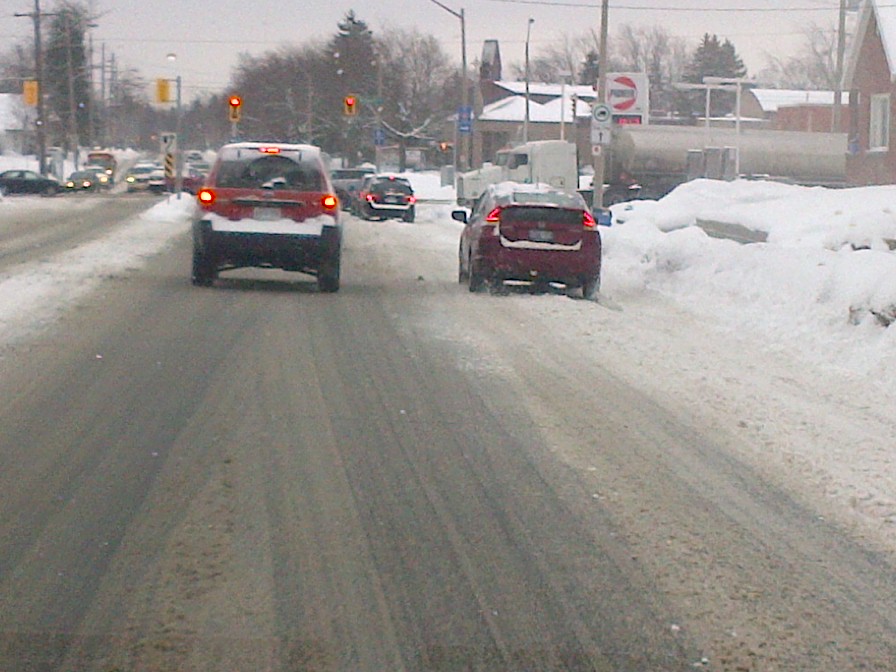The winter driving quiz is here!
 When it comes to winter driving most people deny they have any problems handling bad road conditions. Despite what we may think, winter weather comes and goes each year. We can’t do anything about the snow, ice and high winds, but we can learn to be prepared to make the best choices possible while driving.
When it comes to winter driving most people deny they have any problems handling bad road conditions. Despite what we may think, winter weather comes and goes each year. We can’t do anything about the snow, ice and high winds, but we can learn to be prepared to make the best choices possible while driving.
Below is a short winter quiz to get you thinking positively and proactively about driving in this type of weather. Even if you get some questions incorrect, use the search function to the right of this page to see if you can find the explanations to the answers.
Look to the bottom of the page for answers…but not until you’re done the quiz. Good luck!
1. When should you begin preparing for winter?
a) After the first snowfall
b) Before the first snowfall
c) You don’t have to, just keep doing what you’re doing
d) When the authorities say to do so
2. After it snows, how much of your vehicle should you clear off?
a) Just enough to see out the front
b) Only the windows
c) All of it
d) None of it. The wind will blow off enough
3. If the roads are covered in snow and ice and you begin to slide, you should;
a) Do nothing and wait for the vehicle to stop
b) Steer where you want to go
c) Look and steer where you want to go
d) Adjust your speed, look and steer where you want to go
4. How should you position your vehicle in traffic on snow covered roads?
a) It doesn’t really matter
b) Beside another vehicle so the driver knows I’m there
c) Next to open space
d) Slightly ahead of the driver in the next lane so they can see me
5. What extra items should you keep in your vehicle during the winter season?
a) Bacon
b) Snowbrush, shovel and washer fluid
c) Snowbrush, shovel, washer fluid, extra warm clothes
d) Way too many items to list here
6. Why should you use winter tires in winter weather?
a) Better grip to slow down
b) Better grip to accelerate
c) Better grip to steer
d) All of the above
7. You’re planning to going out but the weather just got worse, should you…
a) Drive slower but keep going
b) Drive with your hazard lights on
c) Stay home until the road conditions are better
d) Just drive on the main roads behind the snow plow
8. When should you put on your winter tires?
a) After the first snowfall
b) When the temperature drops to 7 degrees Celsius (44 Fahrenheit) or below
c) When you find a sale on tires
d) During the first snowfall
9. Where does ice form the most in winter weather?
a) On any road when it’s cold
b) In your kitchen freezer
c) Shaded areas such as bridges and tunnels
d) Intersections
10. Four-wheel drive vehicles give you…
a) Traction to go
b) Traction to stop
c) No need to install winter tires
d) More power to go
How do you think you did? Check below for your answers and if you need further explanations, use the search function on the right side of this screen and search the topic. This is all about educating ourselves and becoming a safe driver. Hope you had fun!
1. b 2. c 3. d 4. c 5. d 6. d 7. c 8. b 9. c 10. d
**Have a quick listen to this short episode of the “Speed Bumps” podcast as winter driving tips are discussed!

[…] The Safe Driver has created a winter driving quiz. The purpose of the quiz is to get you thinking and prepared for the winter driving season and the […]
[…] The Safe Driver has created a winter driving quiz. The purpose of the quiz is to get you thinking and prepared for the winter driving season and the […]
” I did not think I was going too fast”. A common remark from people losing control of front wheel drive vehicles. What the average person and some experts are not aware of is that there can be as high as 950 pounds or more weight on the front axle of their vehicle than the back. So a car that feels like a limousine on the front holds like a golf cart on the back
A 3000lb car with a weight ratio of 65% front weight and 35% rear weight will weigh 1950lb on the front and 1050lb on the rear. After you use 10 gallon of fuel from the rear tank one of the front wheels has as much traction as both rear combined.
If you analyze single vehicle accidents you will find most of them had better tires on the front than the back or a very large weight difference. In fact the worst balanced cars have 4 times as many fatalities as cars designed with better balance. How are you going to tell how fast is too fast under these conditions when it is possible for a balanced car to handle fine on a slippery surface at 50 mph and an unbalanced car to lose control at 20 mph and both to feel the same to the drivers.
Society of Automotive Engineers paper 2002-01-0553 shows any decrease of tread depth from new of the rear tires can contribute to an accident.
Watch Front Wheel Drive stability test on You Tube